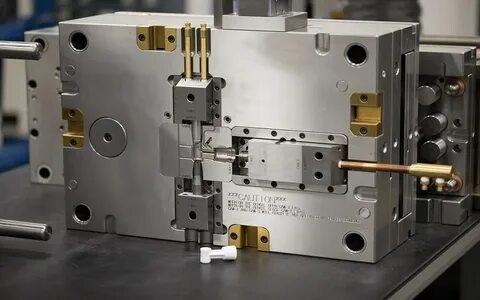Have you ever wondered how the dashboard of your car, toothbrush, or phone case is manufactured? It probably began in a plastic moulding factory, most likely in China. Since the nation leads the world in manufacturing, plastic moulding is crucial in shaping everyday items. However, the procedure of plastic moulding may seem complicated and daunting to beginners. This blog breaks it down into five clear points, so you don’t get confused by the jargon. By the end, you will understand exactly how it works and why it is important, so stay tuned.

Plastic moulding is a popular and effective manufacturing technique that turns molten plastic into a solid, useful form using a mould. It is used in a wide range of sectors, including consumer electronics, automotive, and healthcare.
It is popular due to its ability to make it possible to produce complicated parts quickly, consistently, and affordably. Without compromising quality, moulding allows manufacturing to be uniform and scalable, whether it's a single button or a whole dashboard.
You will find a variety of methods in China, each with its own specific applications. Injection moulding, which involves forcing molten plastic into a metal mould, is the most used method. Then, for hollow items like bottles, there is blow moulding. Another technique is thermoforming, which involves heating plastic sheets to mould them over a shape. Depending on your needs and volume, manufacturers can handle all of the methods, each of which caters to a certain product type.
The mould, which is essential to the process, is not a store-bought item. In China, precise CAD software is used to create moulds, which are typically constructed of steel or aluminium. Following design approval, the mould is frequently hand-finished and machined using CNC equipment.
A good mould will last thousands of cycles, and the quality of the finished product depends on how accurate it is. This is why Chinese firms are aware of the need to invest time and energy to mould design.
A range of polymers, including ABS, polypropylene, polycarbonate, and others, are used by Chinese manufacturers, each of which is suitable for a particular application. The choice of material significantly impacts cost, strength, flexibility, and durability.
For instance, a flexible item might use TPE, but a plastic part intended for high heat will require a heat-resistant polymer. Depending on the purpose and market of your goods, reputable vendors will guide you through this phase.
Lack of communication is one factor contributing to beginners' challenges with Chinese moulding projects. Before committing to full production, you can test designs using the rapid prototyping services. This procedure prevents expensive errors and helps identify them early. Clear communication and early expectations-setting increase the likelihood that the finished product will meet your vision and budget.
Understanding plastic moulding in China is more about understanding the processes, materials, and people that go into making your product than it is about becoming an expert with complicated technology. Even beginners may confidently navigate the procedure if they have the necessary expertise.
FAQs
Which kind of plastic moulding is most popular in China as well as around the world?
The most popular technique is injection moulding because of its effectiveness and ability to create intricate parts in huge quantities.
How much time does it take to produce a mould in China?
It typically takes three to six weeks from design completion to a ready-to-use mould, depending on complexity.
Can I place small orders with a moulding company in China?
Yes, a lot of manufacturers take pilot or low-volume orders, particularly when combined with quick testing or prototyping stages.
What materials are the most popular for plastic moulding?
Common materials include nylon, PC, PP, and ABS. Every material has unique characteristics that are appropriate for various product uses.
When working with Chinese moulders, how can I ensure quality?
Looking for high-quality, cost-effective plastic moulding in China? Contact UTTMould to turn your designs into reliable products.
Choose experienced vendors, get samples, get specifications clear early, and think about prototyping before going into full-scale manufacturing.
Why is China a leader in plastic moulding?
China combines advanced tooling, lower costs, and fast lead times, making it the preferred choice for global brands.